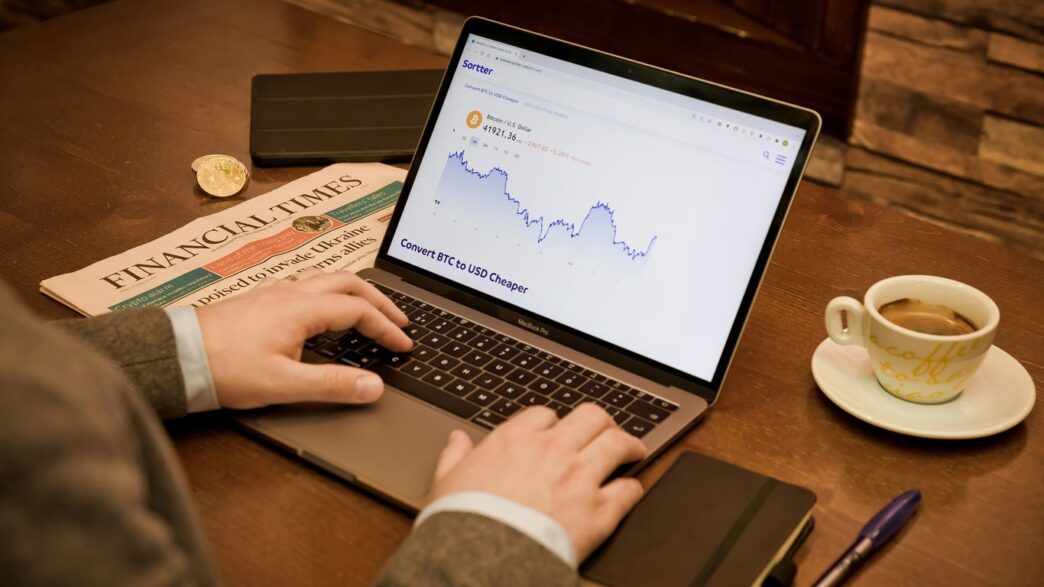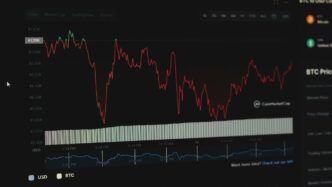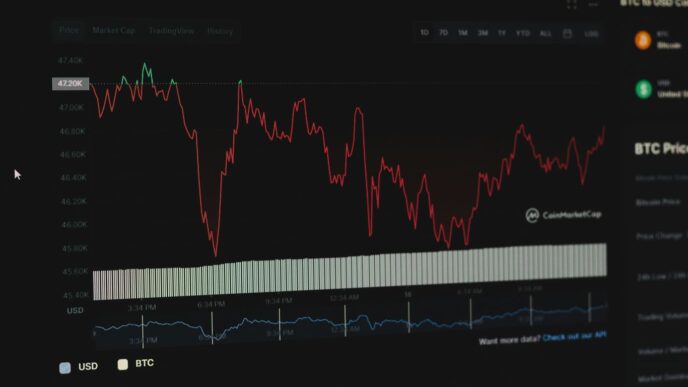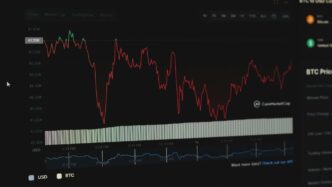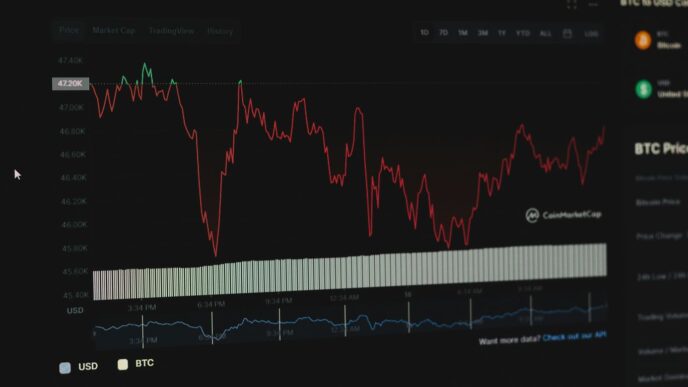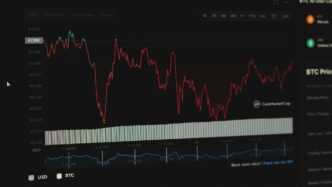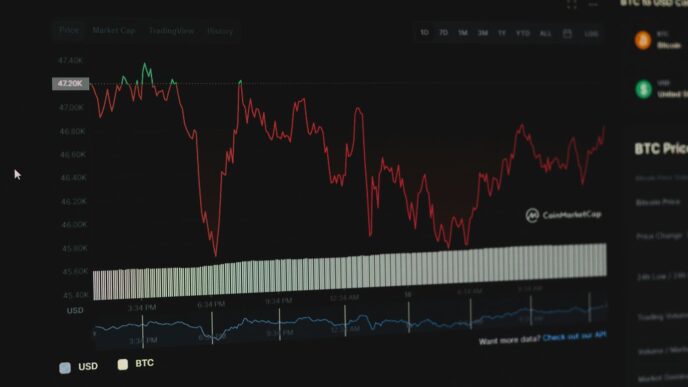Trying to keep up with the markets in 2025 can feel like a full-time job. There are so many finance news sites out there, and each one claims to be the best for real-time updates. But not all of them deliver what investors really need. Whether you’re a day trader glued to your screen or someone just checking in before work, picking the best finance news site can make a big difference in how you manage your money. Let’s break down what actually matters when choosing a site for timely market news.
Key Takeaways
- Real-time updates help you react quickly to market moves, which can be important for both short-term and long-term investors.
- Accuracy and the reputation of the news site matter just as much as speed—bad or outdated info can cost you.
- Look for sites that let you customize alerts and newsfeeds, so you only see what matters to you.
- Some platforms, like TradingView and FINVIZ, focus on active traders, while others like Stock Analysis and Fiscal.ai cater to different needs.
- Balancing cost with features is key—sometimes free sites are enough, but advanced tools or AI-powered insights might be worth paying for.
Understanding the Importance of Real-Time Market Updates

Real-time market updates have changed the way people follow and act on financial news. Keeping up with the speed of market news today isn’t just for professional investors — even everyday traders, retirees, and folks who invest for their kids need to understand why timing matters so much.
How Timely Information Impacts Investment Decisions
Getting reliable information first can mean the difference between snagging a great deal and missing out entirely. If you’re an investor, you know how markets can swing up or down after a single headline or press release. When you react quicker than others, you have a better shot at making money or reducing losses. Here’s how real-time info helps:
- Lets you buy or sell before big price changes happen
- Helps avoid losses by reacting early to bad news
- Gives you more confidence when entering new trades
- Makes it easier to track fast-moving sectors, like tech or crypto
Key Differences Between Delayed and Real-Time Data
Most new sites show some data with a delay, sometimes up to 15 or 20 minutes. That might sound minor, but even a few minutes can be a problem if markets are moving fast. Let’s break down the impact:
| Info Timing | What It Means for You |
|---|---|
| Real-Time | Act instantly, better execution prices |
| 15 Min Delay | Risk missing out on price swings |
| 30+ Min Delay | Often too late to catch opportunities |
If you’re a day trader or follow trending stocks, delayed info can mean you’re getting in after the action. If you invest for the long haul, you might not care as much. Either way, the difference matters.
Why Speed Matters in Fast-Moving Markets
Stock prices, oil, gold, and currencies can jump on breaking news — think company earnings, sudden policy changes, or even surprising tech launches like the new iPager. When that happens, tools that update instantly put you a step ahead. Here are a few reasons speed is key:
- Fast updates help you spot trends as they develop, not after
- You can adjust trades before the big crowds rush in
- Automated alerts let you take action without watching screens all day
So, whether you’re investing for retirement or just trying to score some quick wins, real-time market updates aren’t just a fancy feature — they have real dollar impact, no matter your style.
Key Features That Define the Best Finance News Site
Finding a great finance news site can make all the difference when you want real-time market updates. Let’s get into what actually matters—beyond all the buzzwords you see on landing pages.
Accuracy and Trustworthiness of Financial Data
Having accurate data isn’t just nice to have—it’s non-negotiable. A lag or mistake could mess up your trades or leave you making decisions based on old info. To spot a trustworthy site, look for these things:
- Lists reputable sources, like S&P Global, Nasdaq, or direct from exchanges.
- Updates financials quickly after earnings releases (think sites like Fiscal.ai, which refresh statements in minutes).
- Includes a data disclaimer or sourcing page, so you know where the numbers come from.
A quick reference table can help compare platforms:
| Platform | Data Source Disclosure | Update Frequency | Noted Errors Quickly Corrected? |
|---|---|---|---|
| Yahoo Finance | Partial | Minutes to Hourly | Yes |
| Fiscal.ai | Full | Minutes | Very Fast |
| FINVIZ | Limited | Hourly | Moderate |
| Stock Analysis | Full | Hourly | Yes |
User Experience and Platform Usability
There’s nothing worse than missing news because a site’s a maze. The best financial news platforms get you in and out fast—and help you find what you need:
- Clean dashboards that don’t bury you in ads or pop-ups
- Clear navigation (search, sector breakdowns, trending tickers)
- Responsive charts and quote pages—no endless reloads
- Mobile apps that work, not just check a box
If you ever find yourself lost in menus or struggling to track down a ticker, keep searching for better.
Customization and Real-Time Alerts
These days, everyone wants to cut through the noise and get news that matters to them. A good finance site lets you:
- Set up watchlists of your favorite stocks or funds
- Receive push or email alerts for specific events: news, earnings, analyst rating changes
- Tailor news feeds by sector, region, or asset type
Personalization is the difference between missing a sell-off and reacting right on time. Getting alerts in real time, not just by the end of the hour, is what modern investors have come to expect.
When you stack up sites, pay special attention to these categories. They’re what separate average platforms from ones that professionals and savvy retail investors actually use every day.
Evaluating Data Sources and Quality Control Measures
When you’re deciding on a finance news site for real-time updates, you can’t overlook where the information comes from and how it’s checked. The reliability of the data can make or break your investment decisions, especially when markets swing fast.
Reputation of News Providers and Aggregators
Before trusting a news site, take a few minutes to figure out who’s putting the data together. Some platforms rely on recognized sources like S&P Global or Nasdaq Data Link, which is often a good sign. But others might cobble together headlines and numbers from less familiar sites, so a little digging can help.
- Look up reviews or third-party ratings for the site or app.
- See if they mention their data sources clearly — vagueness is a red flag.
- Check if they aggregate data, like how Yahoo Finance or HelpTheCrowd’s analytics tool, pools information from different places for a wider picture.
Just know that a sparkly interface doesn’t always mean quality behind the scenes.
Level of Transparency in Data Sourcing
A trustworthy finance news site should tell you where its data is coming from, plain and simple. If they’re open about it, that’s a good start. If you need to guess, that’s a problem. Ask yourself:
- Do they have a "Data Disclaimer" or an About page with specific provider names?
- Can you tell if their numbers come from exchange feeds, company filings, or third-party vendors?
- Are any partners or content sources listed, or is everything just “proprietary”?
Transparency lets you check for yourself if the raw info is credible, which matters way more than fancy charts.
Frequency of Updates and Error Correction
Finance news moves fast. Sites that update every minute will often say so — but not all actually deliver on that promise. Here’s what to look for so you aren’t left hanging with stale or mistaken data:
| Site | Typical Update Frequency | Error Correction Policy |
|---|---|---|
| Site A | Every 15 seconds | Manual flags by users |
| Site B | Every 2-5 minutes | Automated corrections |
| Site C | Hourly runs | Regular audits, no live fixes |
Three things matter here:
- How close to "real time" is the data? Seconds, minutes, or longer?
- What happens when an error slips through — is there a visible way to report or flag it?
- Do they explain how corrections are made, or will a wrong headline just sit there all day?
If you’re active in markets, even small lags or slow error fixes can mess up your tactics. So, pick a site that’s upfront about how quickly information gets updated and how they handle mistakes.
In the end, vetting your finance news source for reputable providers, clear sourcing, and reliable update practices can save you frustration — and possibly money — as you track the markets through 2025.
Comparing Leading Finance News Platforms in 2025
Choosing a finance news platform can feel like picking your streaming service—there are a ton of options, each with its strengths, and what works for one person may not work for the next. When you’re after up-to-the-minute market updates, it’s smart to look closely at what sets the top names apart. Here’s how the most popular sites stack up in 2025.
Yahoo Finance: Free and Broad Coverage
Yahoo Finance is still the go-to for folks who want a simple way to check stock prices, news, and charts without pulling out a credit card. It’s known for combining news aggregation with basic analysis tools in a familiar interface. Here’s what stands out:
- Aggregates thousands of financial news pieces daily
- User-friendly search and watchlist functions
- Full access to real-time quotes (with some short delay on the free version)
- Handy for quick market checks, not as deep for research
FINVIZ and TradingView: Tools for Active Traders
If you’re serious about tracking prices minute-by-minute or studying price patterns, FINVIZ and TradingView top the list. Both tools have free versions, but the real action is behind the paywall.
| Platform | Main Strengths | Pricing |
|---|---|---|
| FINVIZ Elite | Real-time data, advanced screening | $39.50/month (cheaper annually) |
| TradingView | Global coverage, robust charting | $0–$239/month (several tiers) |
Highlights:
- FINVIZ Elite: Power users get instant data, more charts, fast screeners
- TradingView: Designed for technical chart lovers, covers worldwide assets and crypto
- Both: Best for swing/day traders or anyone who needs deep, quick analysis
Fiscal.ai and Stock Analysis: For Professional and Retail Investors
Sometimes, you need more than the basics—you want the kind of insights that guide full-time investors or money managers. Fiscal.ai and Stock Analysis are built for that.
- Fiscal.ai
- Focuses on fundamental data, not just prices
- Tracks financial reports nearly instantly post-release
- Offers built-in AI to answer your questions in plain English
- Subscription at $49/month after a free trial
- Stock Analysis
- Totally free—hard to beat for regular investors
- Offers reliable financials, ratios, and basic charting
- Very transparent about where it gets its data
In the end, the best news platform for you depends on how actively you trade and how much depth you need. Whether you’re refreshing for daily trends or digging into company filings, 2025’s top sites give you plenty of choices to fit your style and budget.
Considering Your Investor Profile and Research Needs
Finance news platforms come in all shapes and sizes, but that doesn’t mean every site is right for you. The best way to pick a finance news source is to match its strengths with how you invest and what kind of research you actually need.
Choosing Based on Investing Time Horizon
How long you plan to hold investments has a huge effect on what data and tools matter. For example, day traders want minute-by-minute updates, while those investing for five or ten years can focus more on deep analysis and trends. Here’s a quick look at what matters most for different approaches:
| Investor Type | Best for | Key Needs |
|---|---|---|
| Day Traders | Fast trades | Real-time data, alerts |
| Swing Traders | Multi-day moves | Technical indicators |
| Long-Term Investors | Years/decades | Company fundamentals |
| Passive Investors | Index/ETF focus | High-level trends, costs |
If your approach changes, you might want a news site that can grow with you or shift as needed.
Essential Tools for Day Traders vs. Long-Term Investors
What works for one type of investor might not work for another. Here are some differences that stand out:
- Day traders rely on:
- Ultra-fast news feeds with zero lag
- Custom alerts for sudden price swings
- In-depth charting and technical analysis tools
- Long-term investors focus on:
- Strong stock screening for fundamentals
- Access to research on company finances
- Features to help manage and rebalance portfolios
Sites like Fiscal.ai have become popular among people who want deep research paired with real-time insights, no matter their trading style.
Specialized Features for Mutual Fund or ETF Investors
If you’re mainly interested in funds, you’ll have a totally different set of requirements. Some platforms make it easy to compare fees, track performance, or analyze diversification without digging through endless data. When picking a platform, look for:
- Mutual fund and ETF screeners
- Clear views into expense ratios and holdings
- Historical performance tracking against benchmarks
Long-term and passive investors often appreciate tools that can track a full portfolio and send alerts for any big shifts. It’s all about making sure your news site matches your unique investment priorities – not just what’s popular or packed with flashy features.
At the end of the day, take the time to figure out what truly helps you make more informed decisions, instead of just adding noise to your screen. And if you ever get distracted by splashy news (did you see the latest about the new Virgin Galactic spaceship?), remember to keep your focus on what fits your plan.
Balancing Subscription Costs with Platform Value
The last thing you want is to overpay for a finance news service that barely fits your needs. Getting the right value for your subscription is about weighing what you get for the price you pay. In 2025, there are more options than ever, and they all promise some game-changing feature—so, how do you pick?
Free vs. Paid Finance News Sites
Free sites have gotten a lot better. For example, you can get detailed financial info, watchlists, and even analyst ratings at no cost on sites like Stock Analysis. But watch for limitations: paywalls, delayed data, or ads might start to annoy you once you use them every day. Paid platforms, on the other hand, unlock advanced tools, faster updates, and sometimes better support.
Here’s a quick look at annual prices for some popular finance news platforms in 2025:
| Platform | Free Plan Available | Paid Price/year | Free Trial |
|---|---|---|---|
| Stock Analysis | Yes | $79 | No |
| Seeking Alpha | Partial | $299 ($269 offer) | 7 days |
| TradingView | Yes (basic) | $203 (Essential) | 30 days |
| Motley Fool (Advisor) | No | $199 ($99 for new) | 30 days |
| Morningstar | Mostly Free | $249 (Premium) | Occasionally |
Premium Features Worth Paying For
If you’re debating whether to open your wallet, look for these upgrades on paid plans:
- Real-time quotes and faster news (no 15-minute delay)
- Customizable alerts/push notifications for breaking headlines
- Advanced screeners and export to Excel
- Deeper data, including non-US stocks and specialized fund coverage
- Editorial picks, portfolios, or trade ideas from expert investors
Many active traders swear by TradingView’s paid version because the charting is lightning fast, and the layout is intuitive. Others pick Seeking Alpha Premium for in-depth stock analysis. Newbie investors might find The Motley Fool’s guidance actually worth the fee, especially at the discounted rate.
Assessing Free Trials and Special Offers
Don’t rush into a subscription before exploring their trial periods. Most paid news sites offer between 7 and 30 days for free. During this window:
- Try out all the features, not just the basics.
- Compare the value of paid tools versus free alternatives.
- Pay attention to how much you’re actually using the advanced features.
- Decide if there’s enough extra value or convenience to justify the cost each year.
It’s worth remembering even after that trial, a service that helps you spot an early trend, avoid a risky trade, or gain confidence in a decision can pay for itself. It’s a bit like spending on high-quality sources in technology journalism—sometimes, the extra investment is what sets you apart. Either way, keep an eye on bundled offers, loyalty discounts, and remember: not every expensive product is automatically the best fit for your needs.
Integrating AI and Advanced Tools for Faster Research

AI-driven features are changing how everyday investors and professionals keep up with markets. In 2025, the right finance news platform doesn’t just deliver the fastest headlines—it helps you break down mountains of info and actually spot what’s important, without spending all day glued to your screen. Let’s get into the latest tools.
Semantic Search and Smart Alerts
Searching for info has come a long way since trying different keywords and scrolling for hours. Semantic search means the platform understands your question, not just the exact words you type. It pulls up news and data that match your intent—not just the phrase itself. For example, if you search “EV profits,” a good platform also shows you news on “electric vehicles,” “battery revenues,” or related policy discussions. This reduces the chance you’ll miss key info hidden behind different words.
Smart alerts work hand-in-hand with this. Set up alerts for topics, companies, or even themes—say, "interest rate hikes" or "semiconductor supply." You won’t spam your inbox, either: some platforms let you choose how and when you want notifications. Real-time, daily summary, or just big breaking events—it’s up to you.
- Pros of Smart Alerts:
- Saves you from endless manual checking
- Surfaces stories related to your investments, not just the hottest headlines
- Gives you control over the noise level
AI-Powered Analysis and Insights
Now that the data flood never stops, what really makes a difference is how a site helps you understand what matters. AI-powered summaries scan company earnings, analyst calls, and market news, handing you short, plain-English takeaways. Some even attempt sentiment analysis, measuring how positively or negatively a report is trending—sort of like a weather forecast for corporate moods.
If you’re a data junkie, you’ll also notice more sites offering data export tools, so you can pull relevant stats right into Excel or other apps for your own models.
Here’s how newer platforms stack up on these features:
| Feature | AlphaSense | Stock Analysis | Fiscal.ai | Google AI Research |
|---|---|---|---|---|
| Semantic Search | Yes | No | Yes | Yes |
| Smart Alerts | Yes | Yes | Yes | Yes |
| Sentiment Analysis | Yes | Partial | Partial | Yes |
| Export Options | Yes | Yes | No | Yes |
Google, for example, has begun letting users answer finance questions with AI-powered research tools built for rapid, trusted results.
Personalized Newsfeeds and Recommendations
Modern investors don’t want the same homepage—news feeds are finally becoming personal. AI reviews your watchlists, reading habits, and sometimes your search history to highlight the updates you’ll care about. You won’t see endless crypto news if you only track blue-chip stocks. Even better, many platforms now combine human editorial picks with AI recommendations, catching big news and niche updates side-by-side.
What to look for if you want smarter recommendations:
- Ability to control topics, sources, or "block" noisy headlines
- Integrations with watchlists and portfolios
- Frequent refreshes—stale news is almost as bad as no news
Tech like semantic search and personalized feeds keeps you ahead, even if you aren’t glued to your screen. It’s a sea change from the old way where you had to piece everything together yourself. Over time, investors who adapt to advanced tools like these will probably find it much easier to spot trends and act in real time.
Conclusion
Picking the right finance news site for real-time market updates in 2025 really comes down to what you need and how you like to get your information. Some folks want a simple newsfeed, others need in-depth data or fancy charts, and a few just want quick headlines on their phone. There’s no one-size-fits-all answer. Try out a few sites, see which ones feel easy to use, and pay attention to how fast and accurate their updates are. Don’t forget to think about cost, too—some of the best tools aren’t free, but they might be worth it if you’re serious about investing. In the end, the best site is the one that helps you stay informed and confident in your decisions, without making things more complicated than they need to be.
Frequently Asked Questions
What makes real-time market updates so important for investors?
Getting market updates as soon as they happen helps investors make better decisions. If you know about price changes or big news right away, you can act before the market moves too much. This can help you buy or sell at the right time.
How can I tell if a finance news site is trustworthy?
Look for sites that show where they get their data from and use well-known sources like S&P Global or Nasdaq. Checking for a data disclaimer or a list of sources can help you see if the site is reliable.
Are free finance news sites good enough for real-time updates?
Some free sites, like Yahoo Finance, offer lots of news and data, but the information might be delayed. If you need instant updates, you may want to use a paid site or check if the free site offers real-time alerts.
What features should I look for in a finance news platform?
The best sites have accurate data, easy-to-use layouts, and let you set up alerts for news or price changes. Some also let you make your own watchlists or offer tools for deeper research.
How do I choose a news site based on my investing style?
If you trade often or need fast updates, pick a site with real-time data and strong chart tools, like TradingView or FINVIZ. If you invest for the long term, a site with good research tools, like Stock Analysis or Fiscal.ai, might be better.
Is it worth paying for a finance news site?
Paying for a site can be worth it if you need real-time data, advanced alerts, or special research tools. Many sites offer free trials, so you can try the features before you decide to pay.


